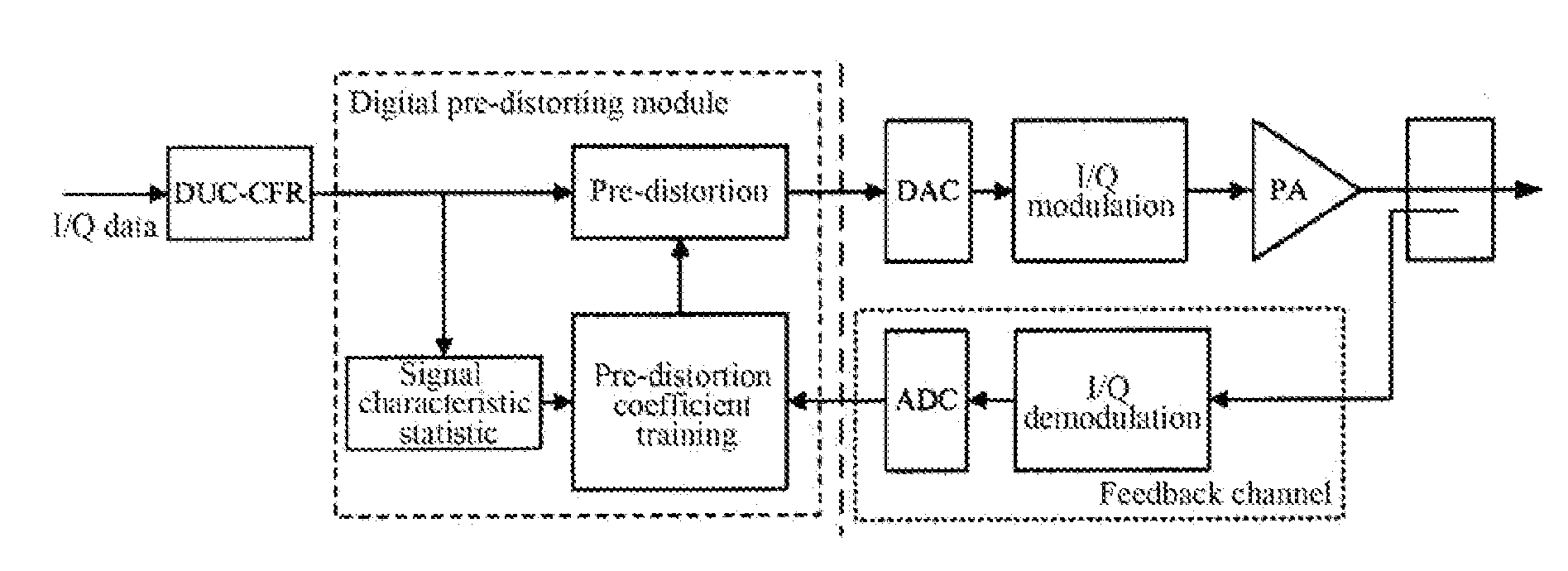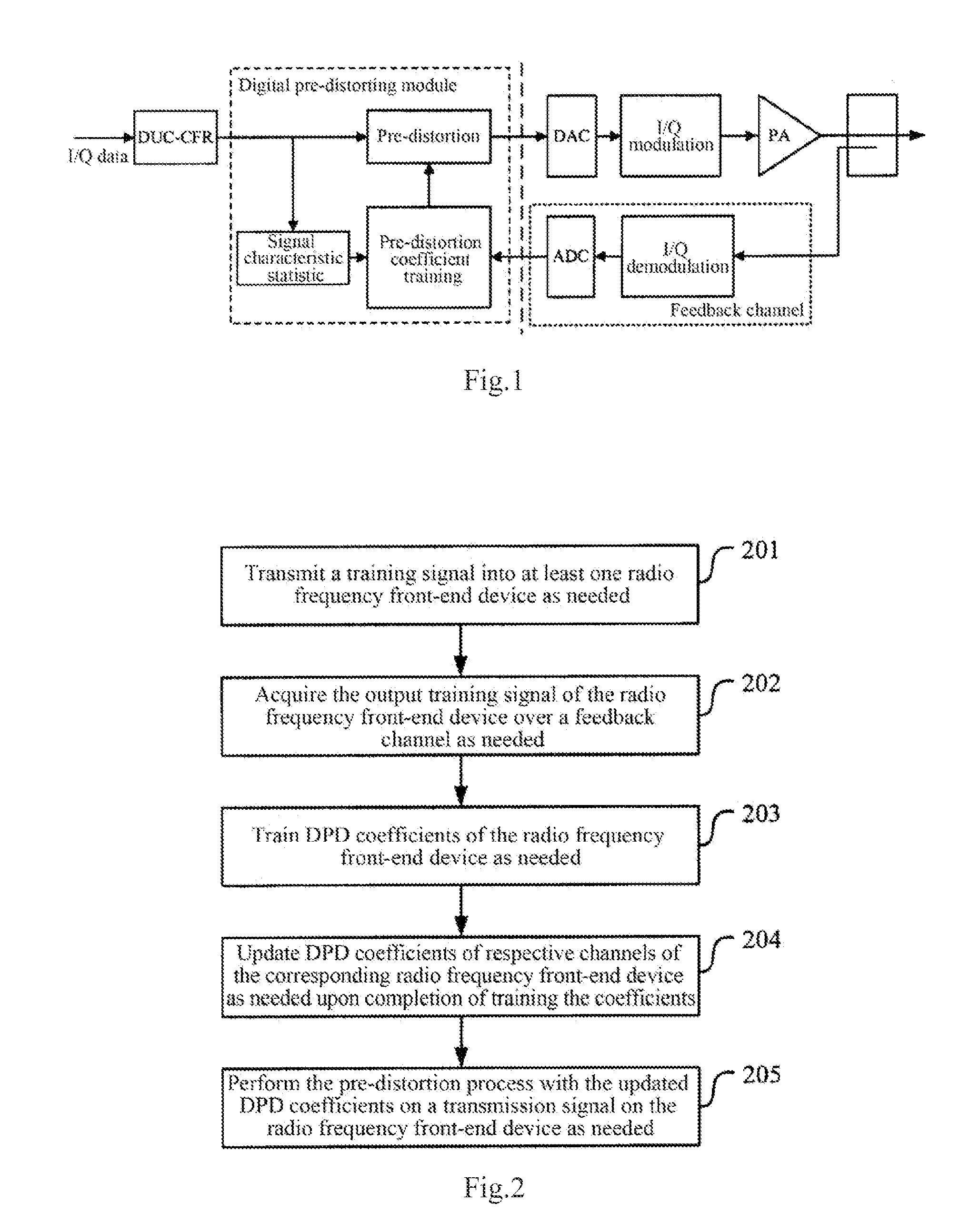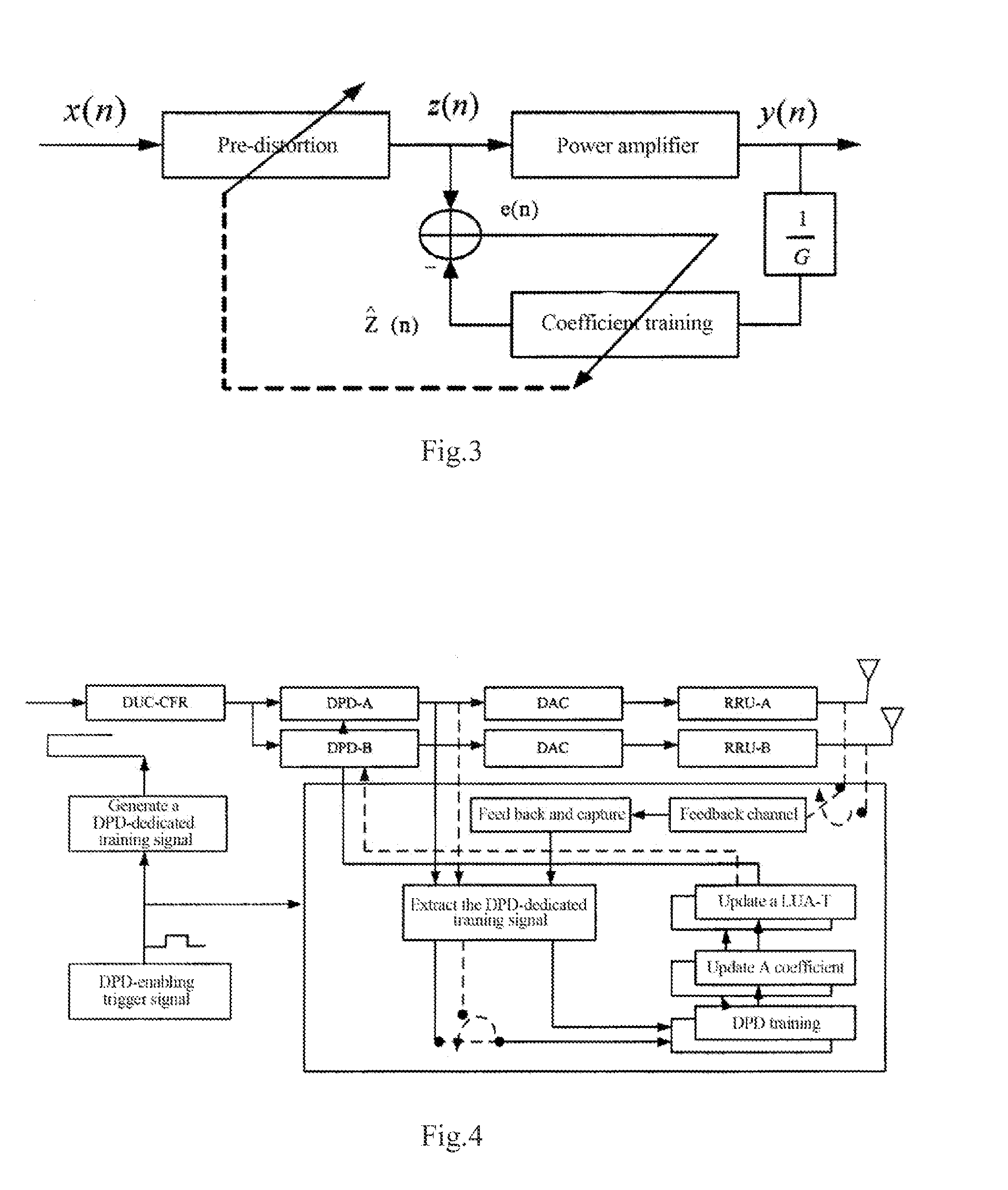Digital pre-distoration processing method and apparatus
a digital and pre-distortion processing technology, applied in the field of radio communication, can solve the problems of low power amplifier efficiency, in-band and out-of-band signal amplitude and phase distortion, and low efficiency of power amplifiers
- Summary
- Abstract
- Description
- Claims
- Application Information
AI Technical Summary
Benefits of technology
Problems solved by technology
Method used
Image
Examples
first embodiment
[0069]FIG. 5 is a schematic flow chart of performing a digital pre-distortion process according to a first embodiment of the invention, and as illustrated, the process can include:
[0070]In the step 501, the system is powered on.
[0071]The step 502 is to wait for a clock to trigger updating of DPD coefficients.
[0072]The step 503 is to generate a training signal with the largest number of carriers, the largest number of users and the highest order of modulation supported by the system.
[0073]The step 504 is to limit a Peak to Average Power Ratio of the signal to a target PAPR through the CFR module.
[0074]The step 505 is to transmit the DPD-dedicated training signal, i.e., the training signal which has been processed in the step 504, in a DwPTS or any other normal downlink timeslot.
[0075]The step 506 is to perform an initial DPD, i.e., an initial pre-distortion process, then adjust a level of a transmission signal to have it satisfy a highest configured power requirement and then have th...
second embodiment
[0086]FIG. 6 is a schematic flow chart of performing a digital pre-distortion process according to a second embodiment of the invention, and as illustrated, the process can include:
[0087]In the step 601, a training signal is pre-generated and pre-stored in the system.
[0088]In the step 602, the system is powered on.
[0089]The step 603 is to wait for a clock to trigger a function of updating DPD coefficients.
[0090]The step 604 is to invoke the pre-stored training signal.
[0091]The step 605 is to limit a Peak to Average Power Ratio of the training signal to a target PAPR through a CFR module. If the pre-stored training signal is a signal which has been processed in the step 605, then this step can be skipped.
[0092]The step 606 is to transmit the DPD-dedicated training signal, i.e., the training signal which has been processed in the step 605, in a DwPTS timeslot or any other normal downlink timeslot.
[0093]The step 607 is to perform an initial DPD, i.e., an initial pre-distortion process,...
PUM
 Login to View More
Login to View More Abstract
Description
Claims
Application Information
 Login to View More
Login to View More - R&D
- Intellectual Property
- Life Sciences
- Materials
- Tech Scout
- Unparalleled Data Quality
- Higher Quality Content
- 60% Fewer Hallucinations
Browse by: Latest US Patents, China's latest patents, Technical Efficacy Thesaurus, Application Domain, Technology Topic, Popular Technical Reports.
© 2025 PatSnap. All rights reserved.Legal|Privacy policy|Modern Slavery Act Transparency Statement|Sitemap|About US| Contact US: help@patsnap.com



